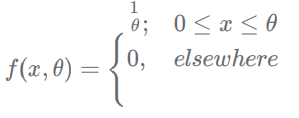Question
Which of the following cases does not explain the maxim
‘Damnum Sine Injuria’?Solution
In the case of Bhim Singh Vs. State of J and K, the principle of Injuria Sine Damnum was applied. In this instance, Bhim Singh was a member of the J&k State Legislative Assembly who was detained by state police while on his way to a legislative assembly vote and detained indefinitely without charge. His wife filed a Habeas Corpus petition to gain his malafide release. The apex Court determined MLA Bhim Singh’s democratic right & awarded him Rs. 50,000 in compensatory losses. In addition, the appropriate police official was penalized for neglect of duty and misconduct.
For the ANOVA which of the following options is INCORRECT.
1. Null hypothesis H0 : μ1 = μ2 = ... = μn
2. F ...
For the distribution with unknown θ

We set the tes...
The grouped data for the observation are as follows.
Class : 2-4 4-6 6-8<...
If ten coins are tossed simultaneously, then the probability of getting at most I head is:
If mean and mode of the distribution is 32 and 21, then the distribution:
For making frequency distribution, the number of classes used depends upon:
Which one is parameter from population?
The mean and median of the distribution are 10 and 11 respectively, then the mode equals to
The deseasonalised time - series data will have only trend (T), cyclical (C) and irregular (I) components and is expressed as:
If xi | fi , i = 1,2,...n is a frequency distribution with standard deviation 15 and mean 30, the coefficient of variation will be equal to:
Relevant for Exams:



